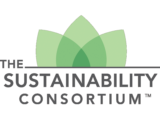The Sustainability Journey
Corporate sustainability leadership: the journey
Successful business leaders understand that a thriving economy depends on a thriving environment, and vice versa. Your customers, employees, suppliers, shareholders and potential investors are well aware that the myth of an “either/or” tradeoff between sustainability and profitability no longer exists. Now, more than ever, the world is your business.
Yet, while the need for corporate sustainability has long been proven, following a clear pathway to leadership — where your company’s business and sustainability goals are in alignment — can be challenging.
The Supply Chain Solutions Center roadmap to leadership can help you navigate that path.
Continue Reading

Featured Content
Report: Accelerating zero-emissions delivery
Report
Explore The Sustainability Journey
Sustainability 101
Sustainability needs to be weaved into your business, not bolted down. These resources will help you learn how to start the sustainability journey for your company.
View All Sustainability 101 ResourcesLevel 1: Engage
The genesis of your company’s commitment to corporate sustainability, this stage is about getting informed on the issues, understanding the landscape (both internally and externally), assessing your areas of opportunity and influence, and discovering where you need help (and how you can get it).
View All Level 1: Engage ResourcesLevel 2: Execute
This stage is about advancing and innovating across your company’s landscape — from your own operations to your suppliers'. It’s a multi-faceted process that ranges from building sustainability plans and proving the business case to implementing, measuring, reporting, scaling and beginning to take a public stand on issues and policies.
View All Level 2: Execute ResourcesLevel 3: Lead
Leading on corporate sustainability means bringing your company’s business and environmental goals into seamless, transparent alignment. You’re accelerating environmental innovation, actively advocating for smart environmental policies, and advancing sustainable business practices to alter the landscape across entire industries and business sectors.
View All Level 3: Lead ResourcesThe Sustainability Journey Resources
Filter by our "Sustainability 101" categories for a concise, high-level overview of Agriculture, Forests, Chemicals, Energy, Freight or Waste. You can also view all of the Engage (Level 1), Execute (Level 2) and Lead (Level 3) resources by filtering for interest areas that are relevant to your company.
Title
Date
Type
Gaining an understanding of the issues surrounding food waste is the first step in mitigating it.
02/24/2019
Guide
Because food waste is a vast and complex issue, we will break up the supply chain in 7 sectors and provide detailed, industry-specific solutions to reduce food waste in our following documents. Here are the in-field food waste solutions!
02/24/2019
Guide
Because food waste is a vast and complex issue, we will break up the supply chain in 7 sectors and provide detailed industry-specific solutions to reduce food waste in our following documents. Here are the processing & distribution food waste solutions!
02/24/2019
Guide
Because food waste is a vast and complex issue, we will break up the supply chain in 7 sectors and provide detailed, industry-specific solutions to reduce food waste in our following documents. Here are the retail food waste solutions!
02/24/2019
Guide
Because food waste is a vast and complex issue, we will break up the supply chain in 7 sectors and provide detailed, industry-specific solutions to reduce food waste in our following documents. Here are the product design & packaging solutions for food waste.
02/24/2019
Guide
Because food waste is a vast and complex issue, we will break up the supply chain in 7 sectors and provide detailed, industry-specific solutions to reduce food waste in our following documents. Here are the consumer food waste solutions!
02/24/2019
Guide
When mitigating food waste from your supply chain, there are many stakeholders — both inside and outside of your company — that you may need or want to engage.
02/24/2019
Guide
Unfortunately, the majority of a product’s plastic or paper packaging is used only once and is not recycled properly, leading to one of the greatest environmental issues we face today: plastic pollution.
02/24/2019
Guide
Plastics are a product of human innovation as they are lightweight, durable, decay resistant, inexpensive and moldable. Unfortunately, this innovation comes at a price for the environment.
02/24/2019
Guide
Clearly, plastic packaging is a massive environmental problem. That also means it’s a massive opportunity — particularly for companies that want to hit sustainability goals.
02/24/2019
Guide
When mitigating packaging waste from your supply chain, there are many stakeholders — both inside and outside of your company — that you may need or want to engage.
02/24/2019
Guide
A brief, high-level list of resources available to help your company mitigate packaging waste.
02/24/2019
Guide
Load More


















